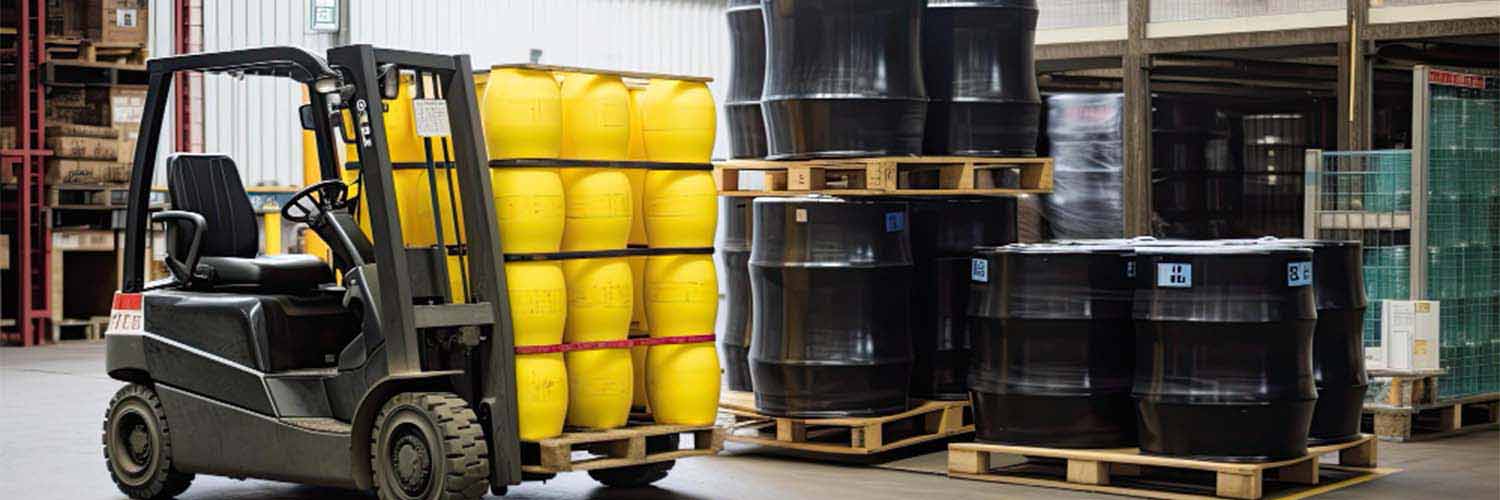Ensuring the Safe Transportation of Hazardous Materials "Key Practices and Regulatory Guidelines"
The transportation of
hazardous materials has been in practice for a long time. Commonly known as
HAZMAT shipments, they have a considerable weightage in the nation's total
freight. Fertilizers, acids, and compressed gasses are transported for
agricultural and industrial usage.
Besides this, they also
include various household commodities and products. Cleaning chemicals, paints,
and batteries are a few examples.
You must be aware of the
dangers associated with these materials. But what is the safest mode of their
transportation? Are there any restrictions? And what you need to know when
transporting such material.
You will learn all this
and a lot more in this article.
Let's begin:
Understanding Hazardous Material
Hazardous material
refers to dangerous goods that can harm others. They are dangerous for the
environment, property, and especially the persons handling them. Flammable
liquids, chemicals, gasses, and radioactive materials are commonly included
under this category.
They require special
care and precautions during packaging and transportation. That is why
specialized containers are often used to ensure safe transportation. These
containers are made from different materials. Choosing the right container for
the right material storage and transportation is essential. Otherwise, a
hazardous spill can occur or contaminate the material.
An experienced shipper
is what you need for the safe
transportation of dangerous material. Shipping
companies categorize these materials, label them, and know which material is
safe to transport with others.
Best Practices to Ensure Safe Transportation of Hazardous
Materials
Adopting best practices,
training, and considering compliance is important to ensure safety.
Here are a few practices
for the safe transportation of hazardous materials:
HAZMAT Classification
Classifying materials
according to their type and level of danger helps reduce accidents. This first
step makes the packaging and shipping of hazardous material easier. However,
the personnel responsible for classification should have enough knowledge of the
various kinds of materials.
Some commonly transported hazardous materials include:
- Chemicals / Fine chemicals /
Petrochemicals
- Liquefied gases
- Aerosols / Cosmetics
- Paints
- Batteries
- Explosives
- Gases
- Dry-ice
- Petroleum products
- Flammable Liquids / Flammable
Solids
- Toxic & Infectious
Substances
- Oxidizing Substances
- Radioactive Material
- Corrosives
- Miscellaneous Dangerous Goods
Now, let us see how
these materials are classified into various categories. In total, nine
categories are present, which include:
Explosives: These materials can explode in transit if
appropriate measures are not taken.
Flammable Gases: This category includes all types of gasses,
like compressed, pressurized, and liquified, as well as toxic and poisonous
gasses.
Flammable Liquids: These liquids have a flash point below 141
degrees Fahrenheit.
Flammable Solids: These include material that can burst
spontaneously, especially when wet.
Oxidizing Substances: This category is related to organic peroxides
and oxidizers.
Poisonous Substances: These are infectious substances that can be
toxic and poisonous.
Radioactive Material: It includes any radioactive material.
Corrosives: These are substances that can cause
corrosion.
Other Dangerous Goods: These materials are harmful to the
environment, like marine pollutants, hazardous waste, etc.
Material with Limited
Hazard: These materials are
not commonly considered hazardous, but they are dangerous because of their
shape, packaging, and quantity.
Packaging and Labeling
Once classification is
done, shippers can determine which material is safe to be sent through which
container. The next step is packaging and labeling the material as per the
guidelines. Each container having dangerous material has a label on it with
necessary information.
It helps in loading and
unloading containers, besides taking appropriate steps in case of emergencies.
Without a proper label, material can spill, and other disasters can happen.
Besides causing harm to the workers, it can also result in shipment
delays.
Label Requirements
The label includes all
necessary information for material handling. It shows the type of danger,
important material handling safety tips, shippers' contact information,
etc.
Accurate labeling is not
just for the safety of the material. It is a corporate social responsibility
for every business. Business owners need to ensure that the shipment of their
goods does not cause environmental damage.
Documentation, Compliance, and Regulation
Preparing detailed
documents that address the details of the materials is important. These details
include the dangers of spilling the material, a contingency plan, and other
precautionary measures. Errors in documentation may result in customs
clearance, shipment delays, and penalties.
Furthermore, considering
the laws and ensuring compliance is mandatory. A person should be familiar with
all the legal laws to sign the shipment paper. The contact number mentioned on
the shipment should also be of an individual fully aware of the material, laws,
and procedures.
Choosing a Suitable Shipping Company
You need to be extra
careful when choosing a shipping company for HAZMAT shipping. Not every shipper
responsibly fulfils all the criteria. Before finalizing a shipping company, you
should also know the basic responsibilities of a shipper. It will help you pick
the most suitable company.
Here they are:
- Determining if the material is
hazardous
- Knowing the suitable category
of the material
- Creating warning labels with a
complete description
- Mentioning necessary information,
including contact details
- Training staff to handle such
material
- Creating an emergency plan to
deal with disasters
- Preparing shipping documents
Problems and disasters
in the HAZMAT shipment can bring a lot of challenges. The first and foremost
drawback is the risk associated with people handling the material. They can
inhale, come in direct contact, catch infections, and get affected with other side
effects.
Besides this, the
inability to comply with the regulations can result in penalties and fines. It
can also damage the reputation and result in delays. Not only this, but the
negative environmental impact may create a wrong perception of the company.
Let DWWLG Transport Hazardous Materials for You!
To avoid all such
complexities, get specialized services from Dynamic World Wide
Logistics Group. We have been safely
transporting hazardous materials for years. Our inspiring record and satisfied
clientele are the evidence of how we work.
Get in touch!



















